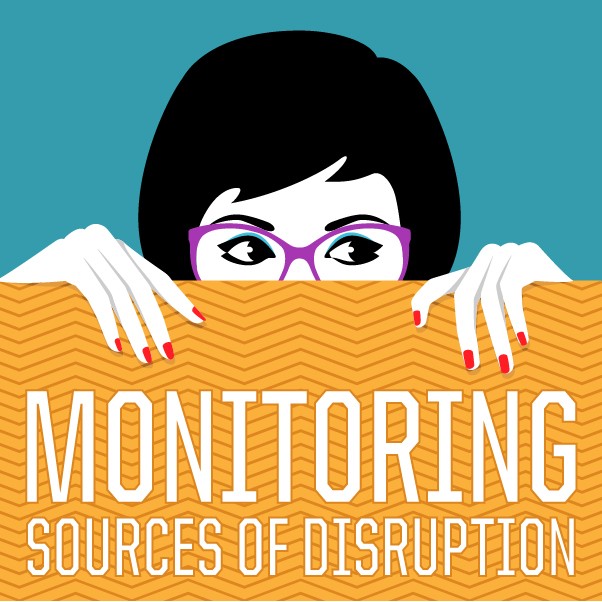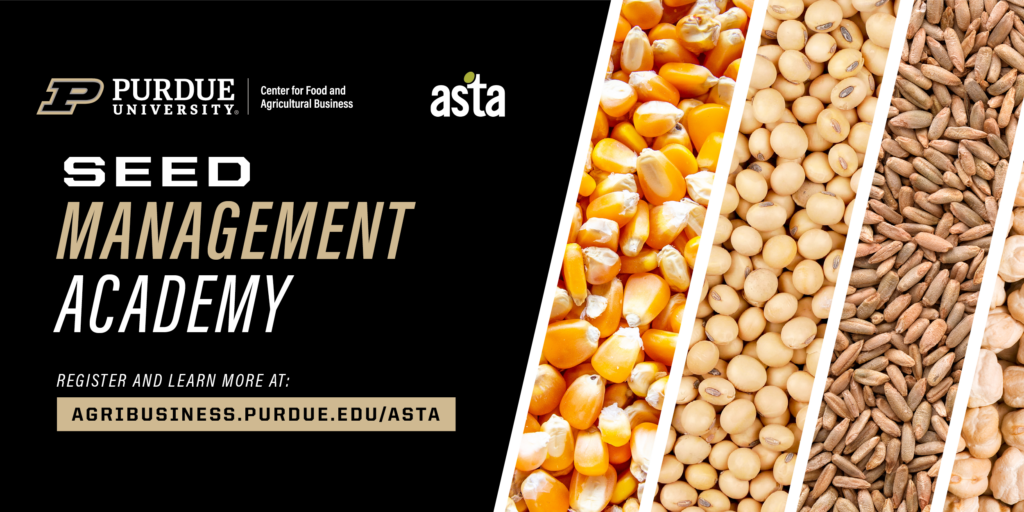Reviewer
Dr. Lourival Carmo Monaco Neto, Postdoctoral Research Associate
Article
The 11 Sources of Disruption Every Company Must Monitor by Amy Webb
Journal
MIT Sloan Management Review. Spring 2020. Pages 65-70
The idea of disruption describes a process in which a company is able to successfully challenge established incumbent businesses. Disruption displaces an existing market, industry or technology and produces something new, more efficient and worthwhile. It usually begins with an inferior product and gradually improves it over time to attract the mainstream. It is distinctly different than innovation in that it does not focus on improving products and services like innovation does. Instead, it aims to fulfill client needs in an entirely new way.
In other words:
- Disruption often changes the way an industry operates.
- Disruption is less about the weapon and more about the strategy.
- Disruption is something you should be doing, not something that is happening to you.
But in order to be able to disrupt its market, a company first needs to be able to scan its environment and understand what may happen. It is not about predicting the future, but understanding what is possible in the future and deploying your assets to be better prepared, taking advantage of this well-prepared position.
A mistake companies often make in this effort is focusing on familiar threats because they have systems in place to monitor and measure known risks. This adds very little value to long-term planning, and worse, it can lead to organizations having to make quick decisions under duress. It is rare for companies to investigate unfamiliar disruptive forces in advance and incorporate this research into strategy. These unfamiliar and external variables of possible change are called ‘weak signals’ and are true early warning factors companies should try to observe. Companies that do not formalize a process to continually look for these weak signals typically find themselves rattled by disruptive forces.
The author uses what is called the Future Forces Theory, which explains how disruption usually stems from influential sources of macro change. These sources represent external uncertainties — factors that broadly affect business, governing and society. They can skew positive, neutral or negative. In this model, 11 sources of macro changes are presented. It is stated that change is the result of disruption in one or more of these 11 sources. Organizations must pay attention to all 11, looking for areas of convergence, inflections and contradictions.
The following are the 11 sources of macro changes and examples of how they may relate to food and agribusiness:
- Wealth distribution: The distribution of income across a population’s households; the concentration of assets in various communities; the ability for individuals to move up from their existing financial circumstances; the gap between the top and bottom brackets within an economy. In agribusiness, this can signal the difference in the purchasing power in different farmers or faming regions, and changes in the power balance may demand a change in the offerings made in a particular market.
- Education: Access to and quality of primary, secondary and postsecondary education; work- force training; trade apprenticeships; certification programs; the ways in which people are learning and the tools they’re using; what people are interested in studying. In the Center for Food and Agricultural Business’ Large Commercial Producer Survey, we are able to identify differences in behavioral aspects, such as the preferred method of acquiring information in relation to a farmer’s level of education. If you are able to identify a shift in farmer average education level, you may be able to identify new, better ways to communicate with them.
- Infrastructure: Physical, organizational and digital structures needed for society to operate (bridges, power grids, roads, Wi-Fi towers, closed-circuit security cameras); the ways in which the infrastructure of one city, state or country might affect another’s. The development of rural areas is a great indicator — or in some cases a limiting factor — of how some technologies can be successful. The infrastructural resources of an area and its evolution may give you insight into how new activities may flourish in these areas.
- Government: Local, state, national and international governing bodies, their planning cycles, elections, and the regulatory decisions they make. This point is extremely important for food and agribusinesses as changes in agricultural policies, such as minimum prices and prevented planting can impact companies, relationships and behaviors. As a farmer or input supplier, understanding shifts in government behavior may give you an idea of how and which policies will be affected and potential results for your operation.
- Geopolitics: The relationships between leaders, militaries and governments of different countries; the risk faced by investors, companies and elected leaders in response to regulatory, economic or military actions. A great example of how geopolitics has completely changed the agribusiness landscape worldwide was the trade war between the U.S. and China. The repercussions of something like this have the potential to plunge agricultural commodity prices and change trade dynamics, bringing new competitors into the business and forsaking others.
- Economy: Shifts in standard macroeconomic and microeconomic factors. If a recession is becoming more and more likely, some agricultural products are impacted faster and with more intensity than others. In some cases, this signal may also indicate an emergence of a completely new market because a product is too expensive or not available. Those who can understand these changes may be able to place themselves as first movers and disrupt the market.
- Public health: Changes occurring in the health and behavior of a community’s population in response to lifestyles, popular culture, disease, government regulation, warfare or conflict and religious beliefs. The effect of a pandemic such as the one we are currently experiencing changes the way people behave and what they consume. For example, people are eating far more meals at home, which has changed the consumer relationship with food. This change, along with food suppliers and the logistics of getting this food into peoples’ homes, have completely disrupted the way we previously understood food marketing channels.
- Demographics: Observation of how birth and death rates, income, population density, human migration, disease and other dynamics are leading to shifts in communities. When demographics change greatly, there are repercussions on how a certain population consumes food. For example, the great populational growth observed in China over past years shaped international food trade today. The way India and sub-Saharan Africa demographics are changing will also have an enormous impact on the global agribusiness structure.
- Environment: Changes to the natural world or specific geographic areas, including extreme weather events, climate fluctuations, rising sea levels, drought, high or low temperatures and more. Environmental changes not only directly affect agricultural production through excessive rain or drought, increase of average temperature and so on, but also impact the way food is produced and consumed. Increase in adoption of conservation practices is a clear sign of how this market can change due to environmental changes.
- Media and telecommunications: All of the ways in which we send and receive information and learn about the world, including social networks, news organizations, digital platforms, video streaming services, gaming and e-sports systems, 5G and the boundless other ways in which we connect. With such a vast amount of people staying home during quarantine, the way we connect with each other has changed completely. This is true across all segments, including food and agribusiness. Salespeople had to learn new skills to be able to continue serving farmers whose needs have developed. The way famers connect with each other has also changed as many face-to-face conversations have migrated to apps such as Zoom, WhatsApp and more.
- Technology: Not as an isolated source of macro change, but as the connective tissue linking business, government and society. We always look for emerging tech developments, as well as tech signals within other sources of change. Many argue that the biggest change in the agribusiness sector over the past few years was the smartphone. Although at first glance this didn’t seem to be the case, this tool fundamentally changed not only the way people relate to each other, but also the way in which information flowed across the value chain.
If these macro sources of disruption seem familiar, it is likely because they are very similar to factors of the well-known PESTEL analysis. The PESTEL analysis (formerly known as the PEST analysis) is a framework or tool used to analyze and monitor macro-environmental factors that may have a profound impact on an organization’s performance. It is often used in collaboration with other analytical business tools such as the SWOT (Strengths, Weaknesses, Opportunities and Threats) analysis and Porter’s Five Forces to give a clear understanding of a situation and related internal and external factors, as should the monitoring of disruption sources. PESTEL stands for Political, Economic, Social, Technological, Environmental and Legal factors, although these have been expanded throughout the years.
Major aspects in monitoring macro sources of disruption are being able to connect them with your company and understand how they will impact it. It is also important to understand who is funding the new developments, who will be affected by them, if these changes will lead to future regulatory actions, how a change in one sector may affect others and who will benefit from these changes.
Information by itself is useless. However, information’s true value is unlocked when it is used in a decision making process. A decision made using information from the right source(s) of disruption in a timely manner makes the difference between being the disruptor and being disrupted.



